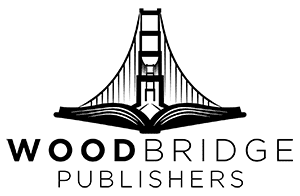Editing is a crucial step in the writing process, transforming draft manuscripts into polished works ready for publication. While many authors may be familiar with the general concept of editing, it’s important to understand the different types of affordable book editing that cater to various aspects of a manuscript. Here, we explore the six main types of editing, each serving a unique purpose in refining a piece of writing.
1. Developmental Editing
Developmental editing focuses on the big-picture elements of a manuscript. This type of editing is concerned with the overall structure, content, and narrative flow. It’s often the first step in the editing process, especially for fiction and complex nonfiction works.
- Structure and Plot: A developmental editor examines the plot for coherence and logical progression. They may suggest reordering chapters or adding new sections to improve the narrative flow. This involves looking at how the story unfolds and ensuring that the pacing keeps readers engaged from start to finish.
- Character Development: For fiction, the editor evaluates character arcs, motivations, and relationships to ensure they are believable and engaging. They may suggest enriching backstories or altering interactions to make characters more relatable and dynamic.
- Themes and Messages: The editor checks that the book’s themes are effectively communicated and consistent throughout the manuscript. They work to ensure that the underlying messages resonate with the intended audience and align with the author’s vision.
Developmental editing is highly collaborative, with editors working closely with authors to reshape and refine the manuscript’s core elements. This stage can be extensive and time-consuming, but it’s essential for creating a strong foundation.
2. Structural Editing
While similar to developmental editing, structural editing focuses more on the organization and logical flow of a manuscript rather than its content. It’s about ensuring that the information is presented in a coherent and accessible manner.
- Organization: The editor assesses how the information is structured, ensuring that the sequence of ideas supports the overall narrative. This involves examining the placement of chapters, sections, and paragraphs to enhance clarity and impact.
- Clarity and Flow: They work to remove redundancies and ensure smooth transitions between sections or chapters. This helps maintain reader engagement and ensures that the progression of ideas is logical and intuitive.
- Consistency: Ensuring that the tone, style, and voice remain consistent throughout the manuscript is crucial in this stage. Consistency helps in maintaining the reader’s trust and keeps the narrative cohesive.
Structural editing is especially important in nonfiction works, where clarity and logical organization are vital for reader comprehension. It ensures that complex information is conveyed effectively, making it easier for readers to absorb and understand the content.
3. Line Editing
Line editing delves into the details of the writing itself. Unlike copy editing, which focuses on technical correctness, line editing is about the art and craft of writing.
- Style and Voice: The editor enhances the author’s voice, ensuring it is consistent and appropriate for the intended audience. They fine-tune the writing style to enhance the narrative’s emotional and intellectual appeal.
- Sentence Structure: This includes refining sentence flow, eliminating awkward phrasing, and enhancing readability. Line editors look for ways to improve rhythm and pacing within sentences and paragraphs.
- Word Choice: Editors suggest changes to improve clarity, impact, and emotional resonance, ensuring that every word serves a purpose. They help authors choose words that convey the right tone and meaning, enhancing the overall quality of the prose.
Line editing is crucial for polishing the manuscript and making the prose shine, enhancing its appeal to readers. It focuses on the nuances of language, ensuring that the writing is both engaging and effective.
4. Copy Editing
Copy editing is the stage where the editor focuses on the technical aspects of writing. It ensures that the manuscript adheres to language rules and style guidelines.
- Grammar and Punctuation: The editor corrects grammatical errors, punctuation issues, and spelling mistakes. This ensures that the text is free from distracting errors that could undermine the author’s credibility.
- Consistency: They ensure consistency in spelling, capitalization, and numerical formatting, often following a specific style guide like APA or Chicago Manual of Style. Consistency in these details helps maintain professionalism and readability.
- Fact-Checking: For nonfiction, copy editors may verify facts, dates, and references to ensure accuracy. This is crucial for maintaining the integrity and reliability of the content.
Copy editing is essential for maintaining professionalism and credibility, as errors in this stage can distract readers and undermine the author’s authority. It’s a meticulous process that adds a layer of polish to the manuscript, ensuring it’s ready for publication.
5. Proofreading
Proofreading is the final step in the editing process, focusing on catching any remaining errors before publication.
- Typographical Errors: Proofreaders look for typos, formatting inconsistencies, and any overlooked mistakes. Their fresh perspective helps catch errors that may have been missed in previous edits.
- Final Consistency Check: Ensuring that all elements, from headers to footnotes, are consistently formatted. This includes checking page numbers, headings, and other formatting elements for uniformity.
- Minor Corrections: Proofreaders make minor adjustments to ensure the text is polished and ready for printing or digital publication. This final polish ensures that the manuscript is as error-free as possible.
Proofreading is crucial for ensuring that the final product is as error-free as possible, offering a fresh set of eyes to catch mistakes that may have been missed in previous edits. It’s the last line of defense against errors before the manuscript reaches readers.
6. Sensitivity Editing
Sensitivity editing is a relatively new but increasingly important type of editing that ensures a manuscript is culturally sensitive and free from potentially harmful stereotypes or biases.
- Cultural Accuracy: Editors check for accurate and respectful representation of different cultures, identities, and experiences. They ensure that the portrayal of characters and settings is authentic and respectful.
- Bias and Stereotypes: They identify and suggest changes to language or content that may perpetuate stereotypes or biases. This involves carefully reviewing the manuscript for language or situations that could be insensitive or offensive.
- Inclusivity: Sensitivity editors help ensure that the manuscript is inclusive and respectful to diverse audiences. They provide feedback on how to make the content accessible and engaging for a wide range of readers.
This type of editing is crucial for authors who want to ensure their work is respectful and accessible to a broad range of readers, minimizing the risk of alienating or offending audiences. It reflects a growing awareness of the importance of diversity and representation in literature.
Wrapping Up
Understanding the six types of affordable book editing is essential for authors seeking to refine their manuscripts. Each type serves a distinct purpose, from shaping the overall structure and narrative to polishing the final details. By investing in the appropriate stages of editing, authors can enhance the quality and impact of their work, ensuring it resonates with readers and stands out in a competitive market. Whether you’re writing fiction or nonfiction, acknowledging and utilizing these editing types will elevate your manuscript to its highest potential. Embracing this comprehensive editing process is key to producing a work that truly shines.
Frequently Asked Questions
1. How does developmental editing differ from structural editing?
Developmental editing focuses on the overall content, including plot, character arcs, and themes. It helps shape the story and develop its core elements. Structural editing, on the other hand, concentrates on the organization and logical flow, ensuring that the sequence of ideas and chapters makes sense and enhances reader comprehension.
2. Why is line editing important for an author's voice?
Line editing refines sentence structure and word choice to enhance clarity and readability. It ensures that the author’s unique voice and style are consistent and engaging. By focusing on the nuances of language, line editing helps maintain the emotional and intellectual appeal of the narrative, making it resonate with readers.
3. What role does sensitivity editing play in publishing?
Sensitivity editing ensures cultural accuracy and respectful representation of diverse groups. It helps authors avoid harmful stereotypes and biases, creating narratives that are inclusive and respectful. This type of editing is crucial for reaching a broad audience and ensuring that the content aligns with current social awareness and sensitivity.
4. Can proofreading catch errors missed in copy editing?
Yes, proofreading is the final check for typographical and formatting errors. It provides a fresh perspective to catch mistakes that might have been overlooked in earlier stages. Proofreaders focus on minor details, ensuring that the manuscript is polished and ready for publication without distracting errors.
5. How do I decide which type of editing my manuscript needs?
Assess your manuscript’s needs based on its current draft. If your story requires major changes in plot or characters, start with developmental editing. For organization issues, consider structural editing. Consult with an editor to evaluate which types of editing will most benefit your manuscript and align with your publishing goals.



